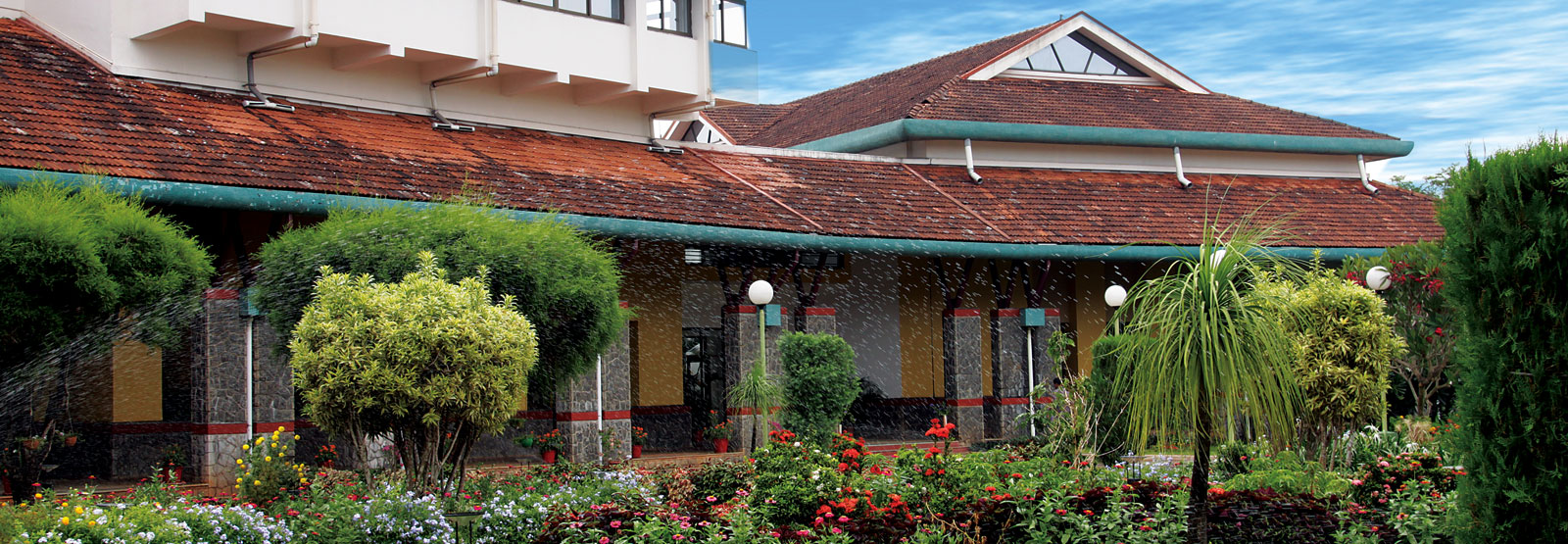
Why Rainwater Harvesting at Indian Institute of Management Kozhikode?
Rain is a gift from Sky ; Deposit it in the Earthen Bank ! This is the essence of the eco-friendly practice of rain water harvesting.
There are well known and established practices of rainwater harvesting and water conservation that have been traditionally followed in our country. However, the success of the harvesting and conservation measures depends on the adoption of the method that will be most suitable to the topography of the particular area, characteristic of soil, etc. Rainwater harvesting is the sustainable and eco-friendly solution in a monsoon abundant State such as Kerala. Several measures have already been successfully implemented in our Institute’s campus for the sustainable harvesting of rain water.
The land allotted for setting up the Institute was basically hilly – comprising of elevated portions of two hills with steep slopes and a low-lying plain field. It was undoubtedly gifted with potential natural beauty. However, we were confronted with a fundamental problem – lack of a sustainable source of drinking water in the Campus adequate to cater to an initially estimated requirement of upto 350 Cum (3.50 lakh Litres) per day. While setting up one of the most scenic but state-of-the-art academic campuses of international repute in our country, this problem was indeed a great challenge for us.
Even though this part of the country is blessed with rainfall from the monsoons (both south-west & north-east), hardly any viable sources of water-supply existed in this locality at the time of setting up of this Institute’s campus. Under the circumstances, it was felt that the most ideal and environment-friendly solution would be to utilize the rainfall - a gift of nature – by harvesting it to the extent practically possible. Thus, a sustainable and eco-friendly solution of Rainwater Harvesting was adopted in IIMK campus.
The choice of an appropriate scheme, for implementing a sustainable rainwater harvesting scheme depended on a variety of factors such as site conditions, availability of alternate water-sources and economic feasibilty. While utilization of the topography of the land plays a major role in effectively harvesting the rainwater, the selection of a suitable storage facility is of utmost importance from the consideration of overall cost. As run-off water from rainfall flows by gravity from an elevated location down a slope or gradient to a lower elevation, it is commonsense to store the water at the lowest possible location.
IIMK Campus buildings are situated on the Academic (southern) hill and the Residential (northern) hill with the low-lying plain field located at the foot of the hills on the northern-most part of the of the campus premises. The details of the site contours suggested that it would be ideal to locate the storage facility in the low-lying plain field area. Thus, it was decided to construct an open, unlined earthen pond in the low-lying field area as the main storage facility.
Rainwater Harvesting – as implemented at IIMK :
Rainwater harvesting has been implemented at IIMK by utilizing the rainfall run-off from the roofs of the Campus buildings by means of eave-level gutters and downpipes which lead to storm water drains built by the road sides. This together with the rainfall run-off available from the Campus land forms the catchment area for the rainwater harvesting scheme.
The run-off collected through a network of storm water drains lead to the re-charging area on the upstream side of the storage facility, i.e. the Rainwater Harvesting Pond. The re-charging area is basically left water-logged, especially during the rainy season, to allow the stagnant water to percolate down and filter through the natural soil strata and indirectly charge the Pond. This indirect charging prevents contaminated surface run-off, carrying silt and other impurities, from polluting the Pond. Flooding in the charging area is prevented by leading away the excess water, along with overflow from the Pond, through another drain which bye-passes the Pond. The harvested rainwater is treated and then pumped to an overhead water tank for distribution.
Rainwater Harvesting, implemented in IIMK has been an ecofriendly solution to the problem of non-availability of a sustainable source of drinking water. Along with harvesting of rainwater, we are also implementing water conservation by collecting the sewage (waste water) generated from the Campus and, after treating it by means of a state-of-the-art Sewage Treatment Plant, utilizing the treated effluent for horticultaral irrigation purposes. Control of soil erosion, along the natural (unlined) storm water drains has also been effectively achieved by providing vegetation and other ecofriendly measures.
Therefore, the rainwater harvesting initiative adopted in IIMK aims for a sustainable and eco-friendly water management strategy combining water and soil conservation measures.